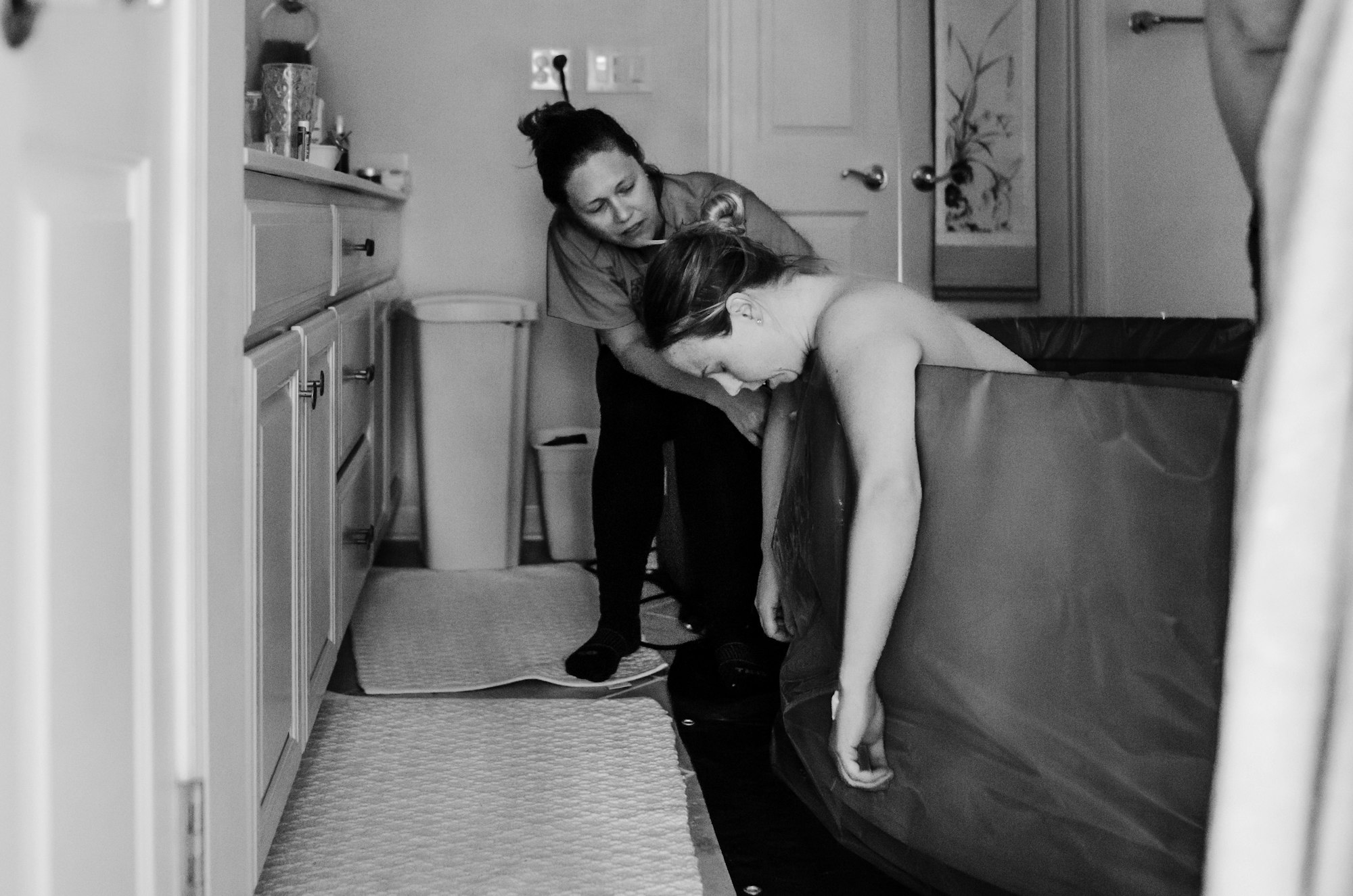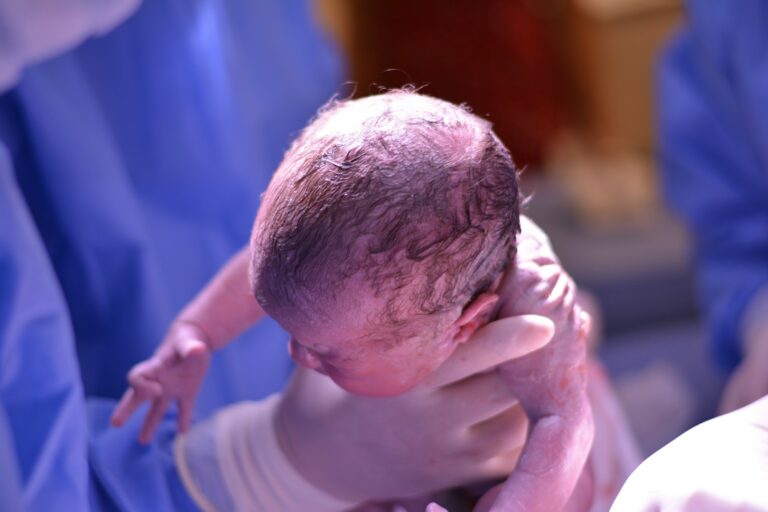Childbirth. For many parents, just this word summons a whirlwind of emotions—anticipation, excitement, sometimes even anxiety or doubt. You might be wondering—what really happens during natural childbirth? Is it about sheer endurance, or is there science supporting it as a safe approach? Questions about safety, pain, and choices flood the mind, especially with myriad opinions from family, friends, and the internet. Let’s unravel facts about physiological birth, tackle misconceptions, highlight benefits for both mother and child, and provide you with practical advice rooted in medical science—so you feel prepared, not just for birth, but for the journey into parenting.
Discovering Natural Childbirth: Understanding Your Options
What Is Natural Childbirth? Myths and Realities
Natural childbirth means delivering a baby without using pain-relieving drugs (like epidurals or anesthesia) and with minimal interventions—induced contractions, accelerations with medical drips, or scheduled procedural interventions are avoided unless absolutely necessary. It relies on the body’s innate wisdom, with support from skilled midwives or care providers who quietly monitor safety while stepping in only if truly required.
Common myths swirl around it—many picture unbearable pain, or that it’s meant for only the brave or stubborn. Actually, evidence demonstrates that, for most healthy pregnancies, natural childbirth brings both safety and satisfaction—so long as skilled supervision and emergency backup are present. A birth can be “natural” in a hospital, birth center, or even at home—the core idea focuses less on the location, more on respecting and facilitating the body’s signals.
Natural Childbirth Versus Medicated Birth
The contrast? It revolves around pain management and bodily autonomy. Medicated births involve administered drugs for pain, possibly leading to restricted movement and diminished sensation. Natural childbirth, on the other hand, leans on non-pharmaceutical comfort measures—breathing techniques, freedom to move, upright labor positions, supportive touch, and hydrotherapy (think: warm water baths or showers).
Why does this matter? When parents can move freely, they often feel more in control, react instinctively, and actively participate in birth. Faster recovery, natural hormonal cascades (like a rush of oxytocin, the “bonding hormone”), and heightened early-mother-baby connection often follow natural delivery. Yet both pathways hold value; informed choice—matched to medical advice and personal circumstances—reigns supreme.
Historical Perspective and Modern Shifts
Decades ago, birth almost always happened at home, sans medicines or monitors, supported by midwives. Medical advances pushed births into hospitals, introducing interventions. Now, trends show a return to physiological birth practices—midwife-led care, use of water pools, and preference for minimal interventions—without forgoing the safety net of modern medicine. For today’s parents, the goal is balance: embracing science yet trusting nature’s process where reasonable.
The Benefits of Natural Childbirth for Parents and Baby
Physical Benefits for Mother and Baby
By skipping routine medicines, you reduce exposure to potential side effects in both mother and baby. Shorter hospital stays, rapid postpartum mobility, and decreased rates of infection or complications are commonly observed. Babies adapt more smoothly to life outside the womb, with less risk of medication-induced drowsiness or breathing challenges—vital in the first minutes of life.
Emotional and Psychological Boost
Labor without drugs or excess machinery often enhances a sense of personal achievement and confidence in bodily instincts. Active participation, support from close ones, and the surge of endorphins (the body’s natural painkillers) can transform pain into purpose. As parents recount, those moments forge unexpected resilience and deeper partnerships—bonding through shared endurance and triumph.
Faster Recovery and Bonding
Immediate skin-to-skin contact, facilitated by undisturbed, unmedicated birth, triggers a potent hormonal rush—oxytocin and endorphins stream through, calming the mother, encouraging breastfeeding, and anchoring emotional attachment. Quick recovery means parents start their caregiving roles feeling alert and capable, not sidelined by medical procedures or drowsiness.
The Principles of Natural Childbirth
Trust in the Body: Minimal Interventions
The first principle: the birthing body, in most cases, knows what to do. Medical monitoring—tracking baby’s heart sounds, mother’s blood pressure—remains essential, but active interventions (like artificial rupture of membranes, hormone drips, or routine episiotomies) are reserved for complications. This respectful “hands-off, eyes-on” approach, backed by education and vigilance, encourages safety while amplifying maternal confidence.
The Power of Environment and Support
Picture a room bathed in dim light, with soft music, privacy, and the scent of familiar things—this environment supports labor hormones and calm. Stress and alarm inhibit progress, while reassurance and gentle support smooth the birthing process. Whether at home, hospital, or birth center, being surrounded by steady, skilled hands—partner, doula, or midwife—can transform exhaustion into encouragement.
Mammals instinctively seek a safe, quiet den to birth; humans follow similar rules. Emotional security and trust remediate pain, reducing need for external intervention.
Flexibility and Safety
Every plan should flex. Emergencies—be it excessive bleeding, fetal distress, or unforeseen twists—demand quick pivots. A “natural” approach is never about refusing help; rather, it’s about limiting interference to what is medically indicated. Emotional readiness for change, paired with a supportive birth team, empowers parents to handle any situation as it arises.
Preparing for Natural Childbirth: Practical Steps
Choosing an Attuned Birth Team
Your caregivers shape your experience. Seek a team—midwife, doula, clinician—that listens, explains, and collaborates. Their familiarity with natural childbirth methods and protocols offers you clarity and reassurance. Discuss your preferences openly before labor begins, asking about hospital policies, availability of comfort options, and willingness to adapt to your vision.
Prenatal Education: Classes and Peer Sharing
Attending childbirth classes focusing on physiological labor, coping tools (like breathing techniques and movement), and communication with your support partners is a game changer. Techniques such as Lamaze or Hypnobirthing are not just trends—they are evidence-based methods for managing pain and anxiety. Peer groups or online forums provide another layer—the camaraderie of shared experiences and practical tips.
Personalised Birth Plan
Drafting a plan? List your comfort preferences, pain relief strategies (non-pharmaceutical and otherwise), and support arrangements. Keep it adaptable—open to recalibration if things shift. Share and discuss the plan with your team; clarity now helps everyone stay aligned if quick decisions are needed later.
Physical, Nutritional, and Mental Preparation
Daily walks, prenatal yoga, or swimming improve stamina and flexibility—both keys for labor. Food rich in vitamins, proteins, whole grains, and fluids forms the foundation for healing and energy. Fortify mental resilience with mindfulness, guided imagery, and breathing exercises. A robust support network—friends, elders, trusted practitioners—fills gaps when energy or courage wavers.
The Stages and Experience of Natural Childbirth
The Flow of Physiological Birth
In late pregnancy, your cervix softens, and irregular contractions begin—the baby shifts lower. Once labor gets underway, contractions intensify, prompting cervical opening and downward movement. Each contraction signals oxytocin release, deepening progress.
Contrary to fearful stereotypes, labor pain isn’t constant nor meaningless—it prompts movement, encourages different birthing positions, and, with each wave, dials up the body’s endorphins. The support system—calm, kind, steady—lets the mother focus inward, breathe through intensity, and ride natural pain relief.
Towards birth, a burst of adrenaline heightens focus, helping with that final push. The newborn, supported by hormones in the mother, finds the breast naturally—a symphony of adaptation and bonding unfolds.
Early Labor: When to Stay Home, When to Move
Early labor (cervix 0–6 cm) features mild, irregular contractions—often best managed at home. Wait until contractions are stronger, consistent, and spaced around five minutes apart before heading to your birthing site. Exceptions: sudden heavy bleeding, severe pain, or rapid contractions—these warrant prompt medical attention.
Active Labor and Transition
From 6–10 cm, contractions grow in frequency and strength—now, comfort skills (water, massage, movement) come to the fore. The final stage—transition—can be physically and mentally taxing, but signals birth is imminent. The urge to push is overwhelming, natural, and usually short-lived (20 minutes to two hours, varying greatly).
Delivery of the Placenta
Delivery isn’t over just yet—the placenta follows, usually in under half an hour. Breastfeeding stimulates further oxytocin production, reducing bleeding risk and helping the uterus contract. Careful monitoring continues—your well-being is paramount.
Birth Settings: Where Can Natural Childbirth Happen?
Hospitals
Hospital births provide immediate access to advanced medical care—vital if complications occur or you are considered high-risk. Some facilities now offer natural childbirth pathways: intermittent monitoring, birth pools, mobility, and supportive environments—but the ambience may feel less personal.
Birth Centers
For healthy pregnancies, birth centers present a home-like approach: privacy, personalized care, freedom to choose labor positions, and less frequent interventions. Midwives are always ready to coordinate rapid transfers if required.
Home Birth
With a skilled midwife and emergency transfer plans, home births are an option for low-risk parents. Warm familiarity, privacy, and fewer disruptions support natural processes and instinctive behavior.
Possible Risks and Special Scenarios
High-Risk Pregnancies: When Intervention Is Wise
Some health conditions—preeclampsia, multiple pregnancies, certain fetal positions, or chronic illnesses—warrant more vigilant monitoring and potentially, timely medical intervention. Regular assessments and readiness for rapid action prioritize safety at every twist and turn.
Managing Complications
Natural does not mean risk-free. Tears, postpartum hemorrhage, or infections may occur even with the best planning. Transparent dialogue and willingness to use medical techniques when necessary ensure good outcomes while limiting exposure to unnecessary procedures.
Support Systems for a Positive Experience
The Empowerment of Continuous Support
Partners, doulas, and midwives do more than simply “help.” Their presence offers encouragement, pain relief, gentle advocacy, and calm—a buffer against anxiety. Multiple studies confirm: continuous, attentive support correlates with lower pain perception, reduced intervention, and greater birth satisfaction.
Community Connections
Peer groups—online or face-to-face—dispel fears and foster practical exchange. Being in touch with others facing similar journeys instills confidence, shares tips, and mitigates isolation during pregnancy and early parenting.
Common Myths and Social Beliefs
Pain Relief: What’s Really Possible?
Many imagine natural labor pain is intolerable. In reality, the body has mechanisms—endorphin release, rhythmic movement, specific labor positions—that offer real, sometimes surprising, relief. External aids—massages, water, breathing—are not “lesser” solutions, but rather, potent tools. Still, if the pain intensifies beyond comfort, using medication is a valid option—never a mark of failure.
Interventions: Friend or Foe?
Interventions are sometimes vital, and their use, when thoughtfully indicated, aligns with natural childbirth values. What matters: respectful application, clear communication, and a flexible mindset.
Cultural Attitudes
Natural childbirth isn’t about proving strength or competing for accolades. At its heart, it’s about preparation, trusted support, open dialogue—and respect for every parent’s journey and unique needs.
Success Tips and Medical Insights
Crafting a Soothing Space
Lighting matters. Soft sounds matter. Calmness matters. These seemingly small details can reduce stress, enhance hormonal flow, and ease pain. The science is clear: upright positions and water immersion promote comfort and advance progress.
Nutrition, Fitness, and Recovery
Balanced meals—rife with vitamins, protein, and hydration—lay groundwork for energy and swift healing. Physical activity, as guided by your care provider, sustains flexibility. After birth: prioritise sleep, enlist help for daily tasks, maintain perineal care, and keep an eye on mood and well-being. It’s perfectly reasonable to seek support in caring for yourself as you care for your newborn.
Key Takeaways
- Natural childbirth is a safe and empowering option for many.
- Respect, preparation, and flexible support—these are pillars of a positive experience.
- Each birth story is a tapestry—unique, personal, requiring trust in oneself and in medical guidance.
- Unwavering flexibility and strong communication ensure safety, satisfaction, and well-being for the whole family unit.
- Support, whether from a birth partner, doula, or peer, can offer quiet strength.
- Reliable resources and healthcare professionals are readily available on the journey—download the application Heloa for personalised guidance, community support, and free child health questionnaires.
Questions Parents Ask
How can I prepare myself mentally for natural childbirth?
Mental strength can make a real difference. Practicing mindfulness, gentle breathing, and guided relaxation routines helps manage stress. Join prenatal classes that teach these tactics and talk with supportive partners or caregivers. Expecting a mix of nerves and excitement is completely fine—building familiarity with the process and having encouraging professionals by your side makes it easier to face uncertainties.
What pain relief options are available if I choose natural childbirth?
Plenty of non-medicinal methods stand ready: walking, repositioning, using a birthing ball, warm baths, focused breathing, and gentle massages can all soothe pain. A supportive doula or partner, heat packs, or even TENS units (mild electrical stimulation) help many parents cope. If discomfort escalates, discussing further options with your care team is always possible—your comfort and progress are the top concern.
Is natural childbirth possible in a hospital setting?
Absolutely, many hospitals now encourage preferences for natural childbirth. Speak with your caregivers well before labor—ask about intermittent monitoring, upright positions, possible use of water, and midwife-led management. Transparent communication ensures your wishes are respected, and comfort measures are prioritized—even within the hospital walls.
Further reading:









